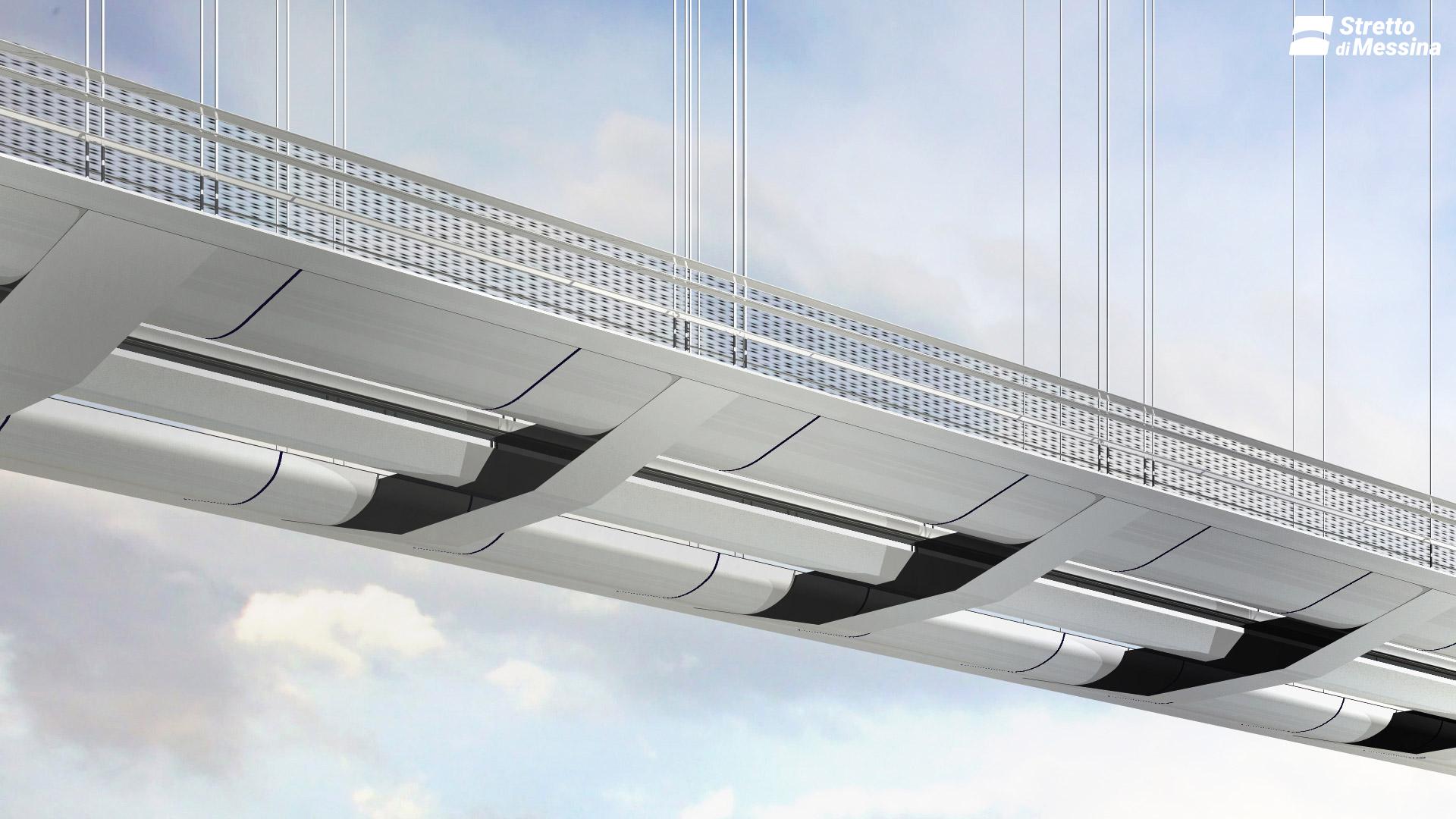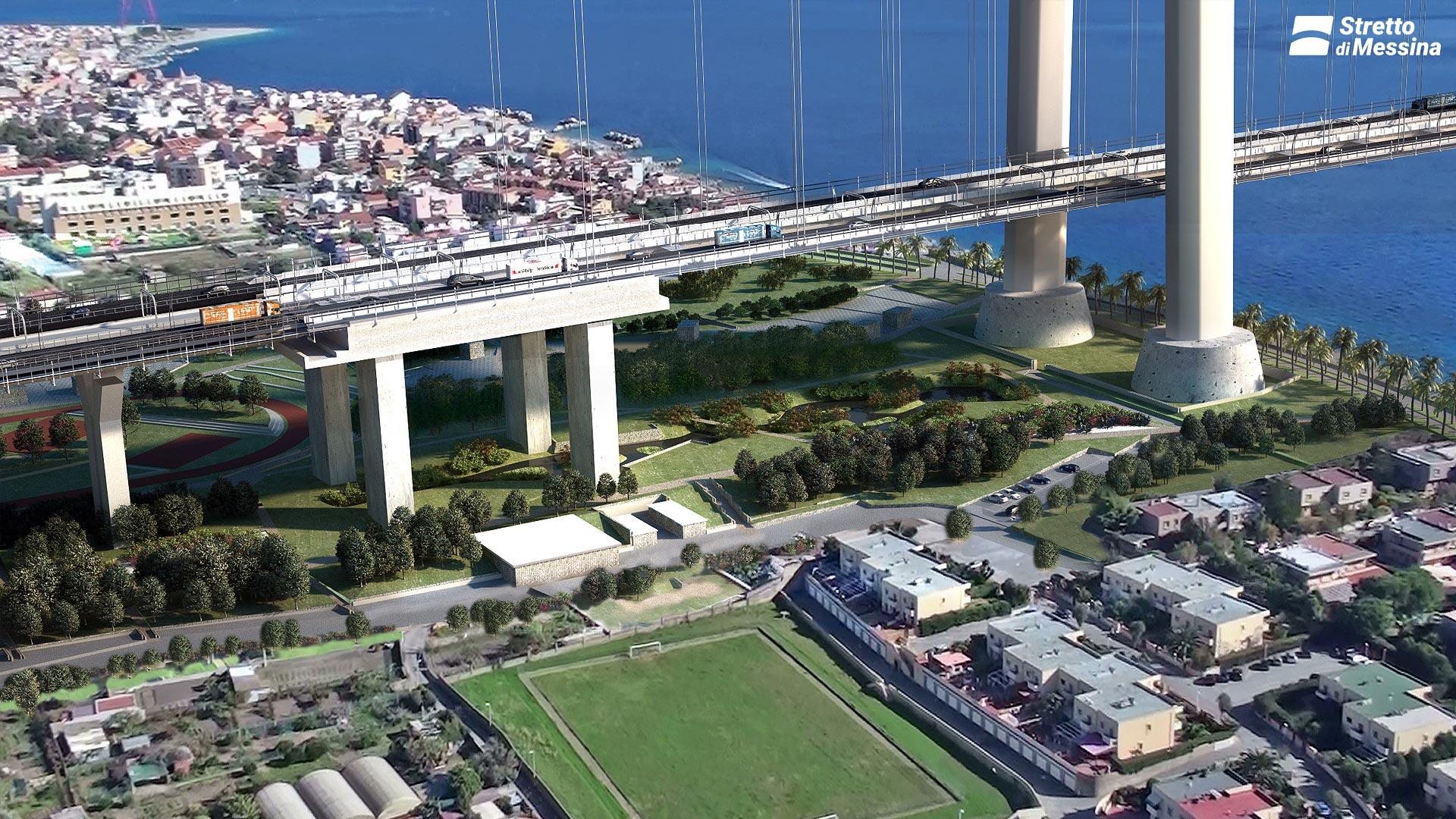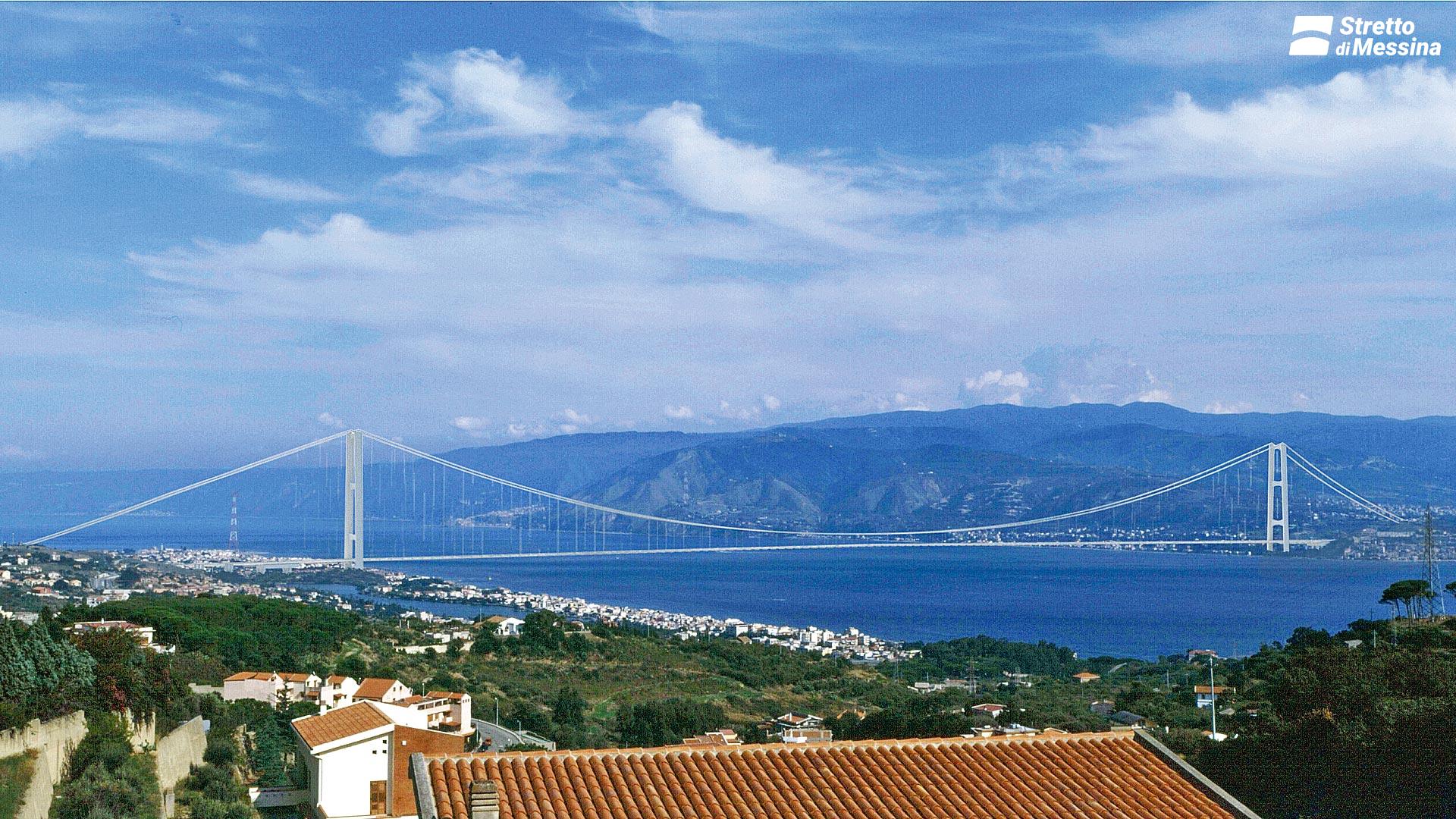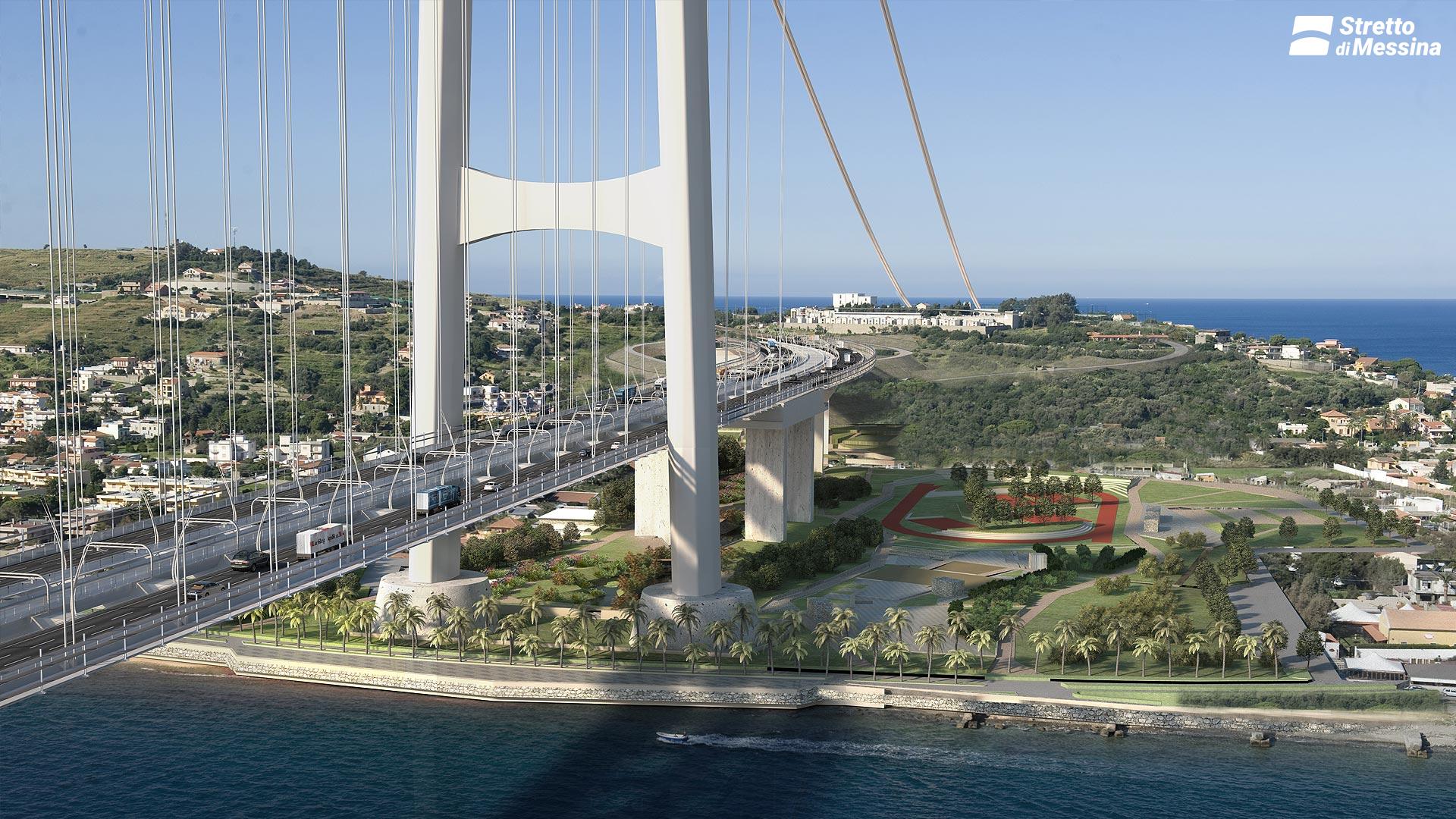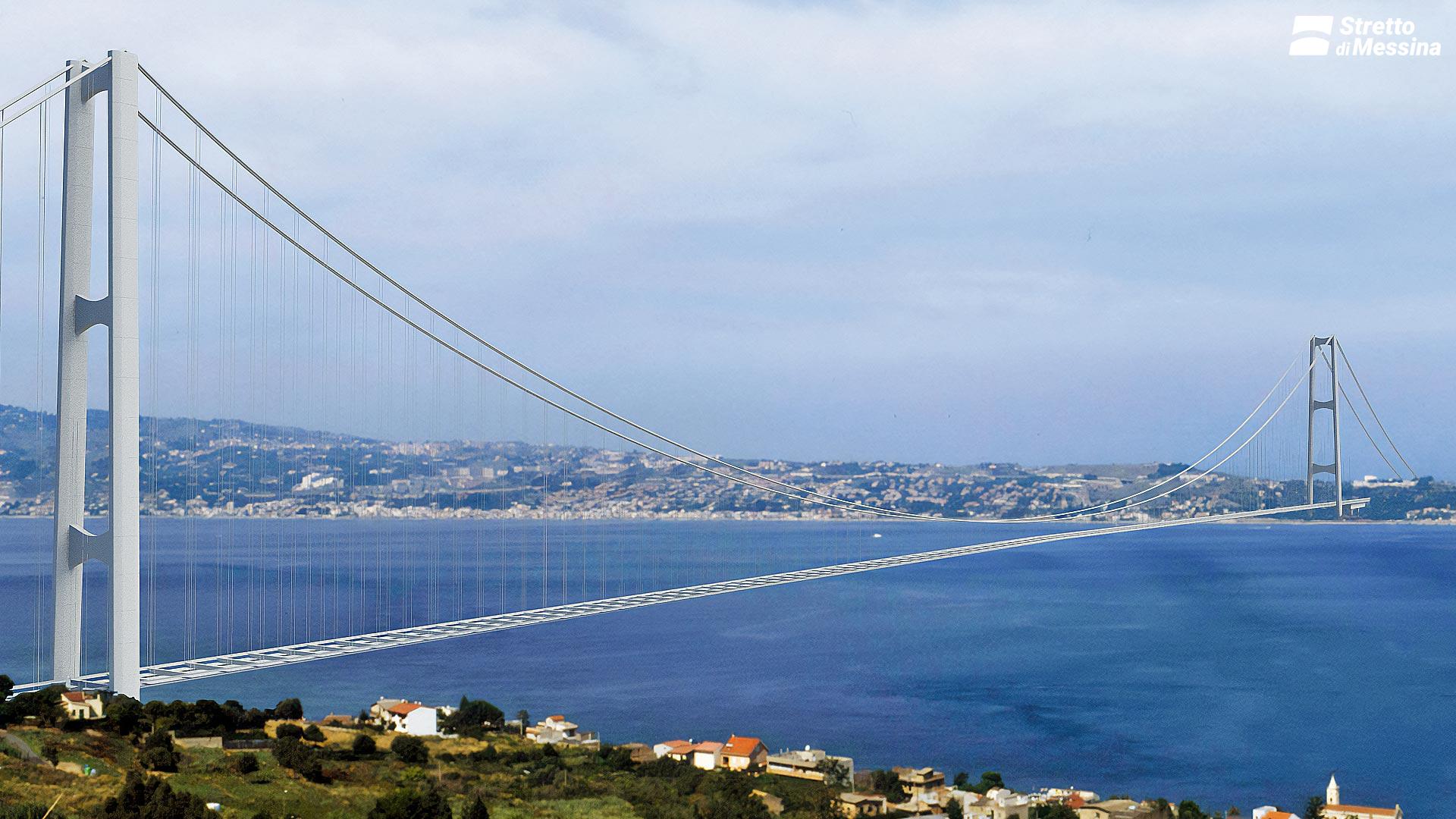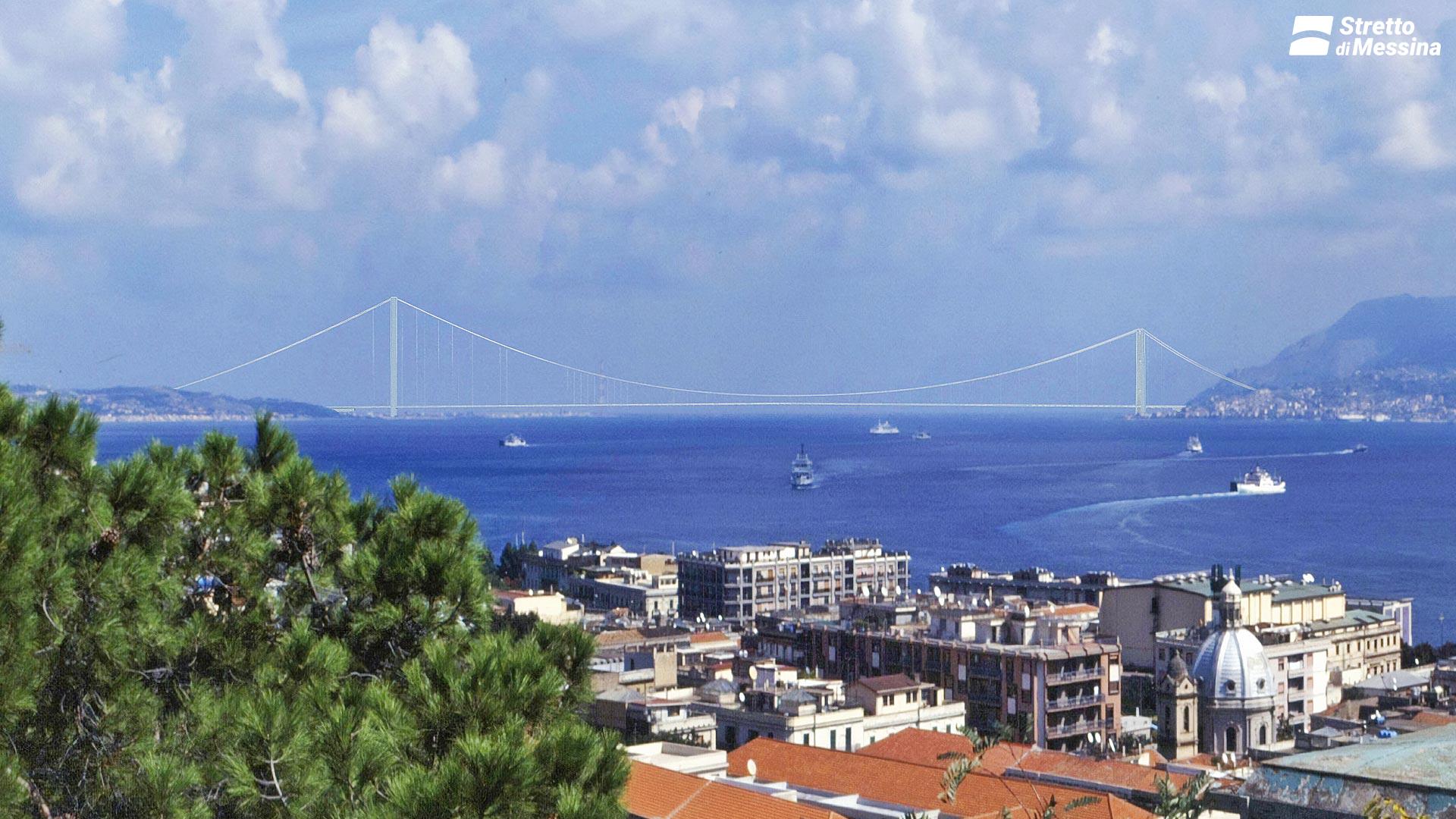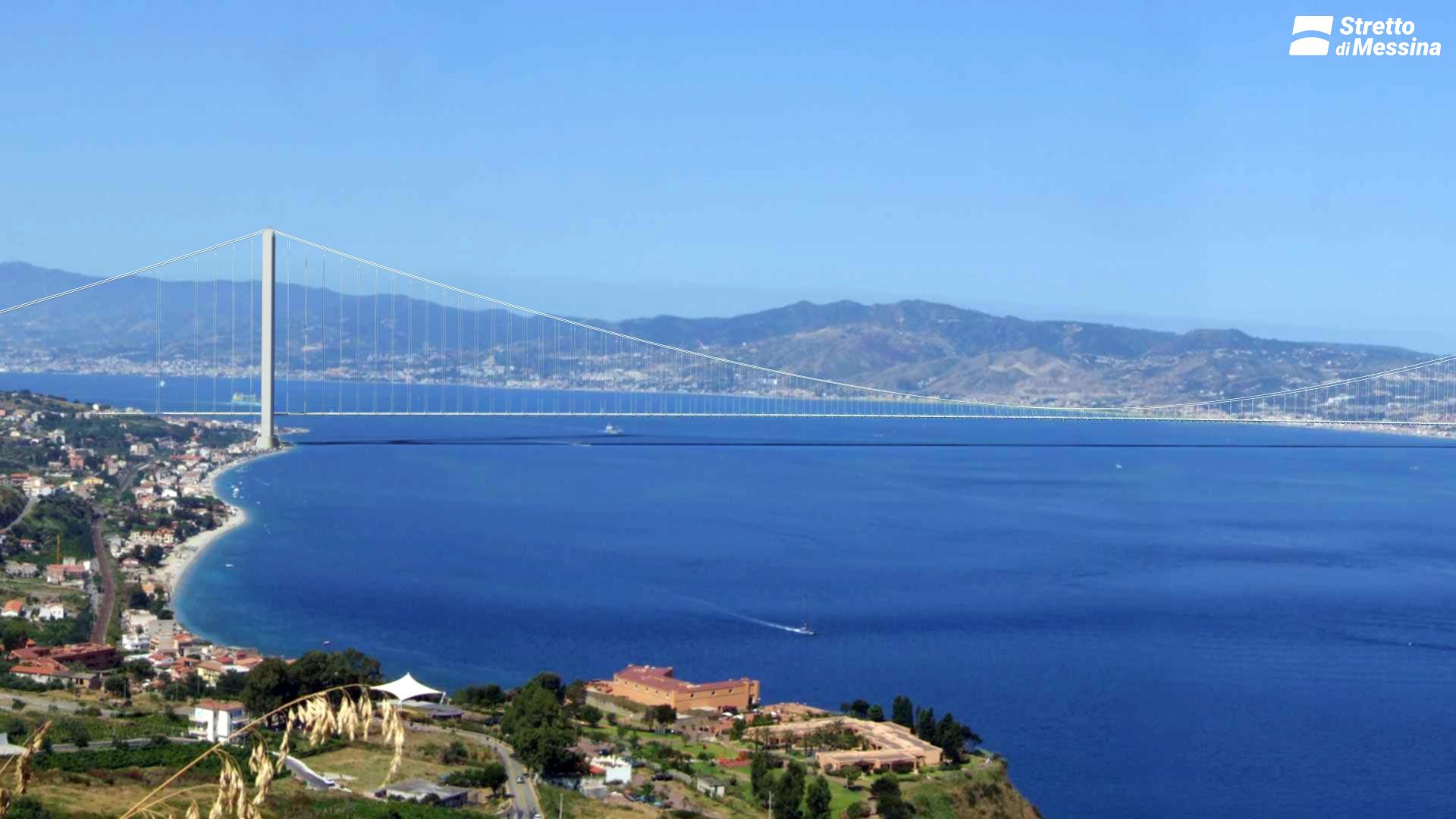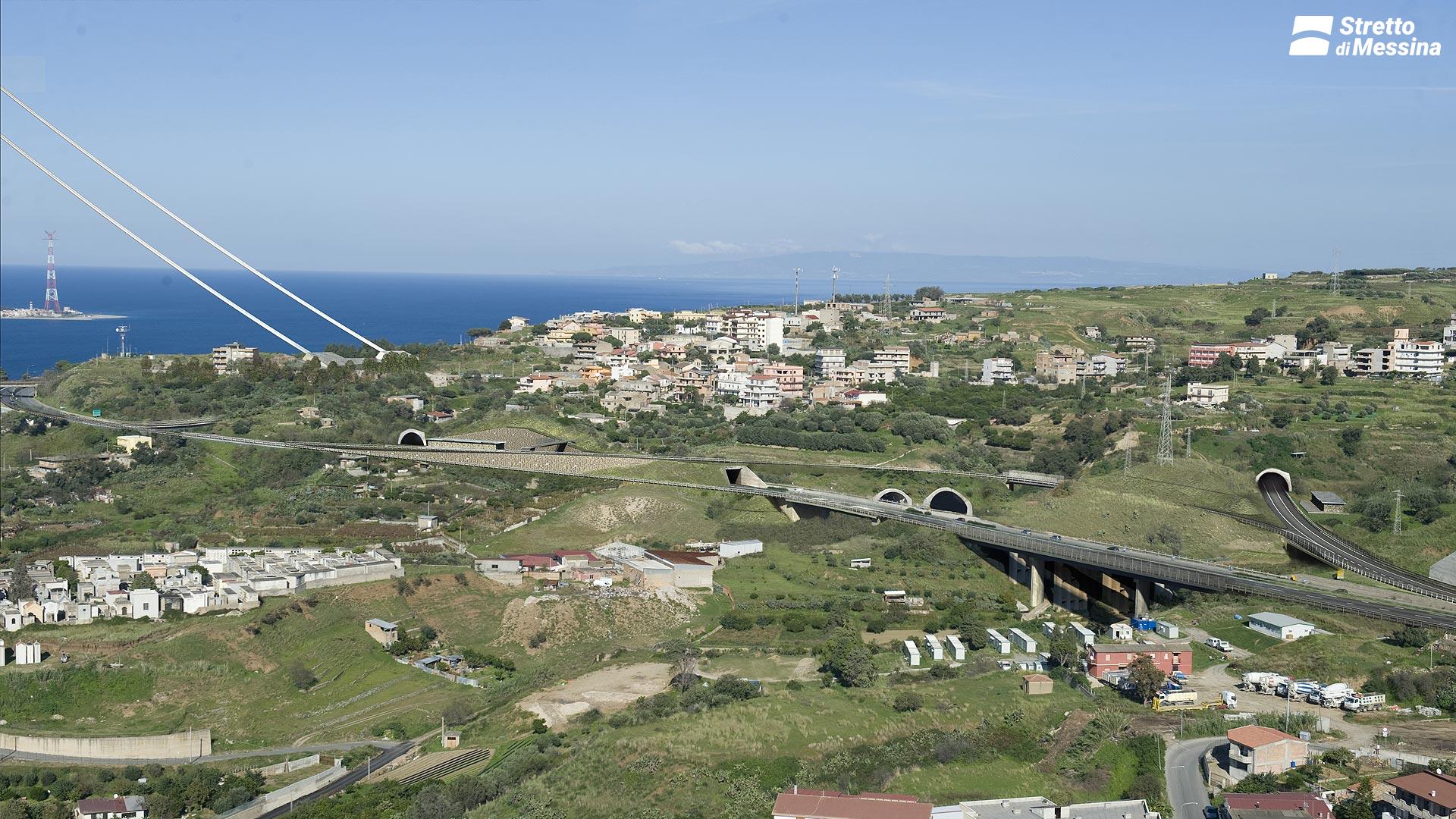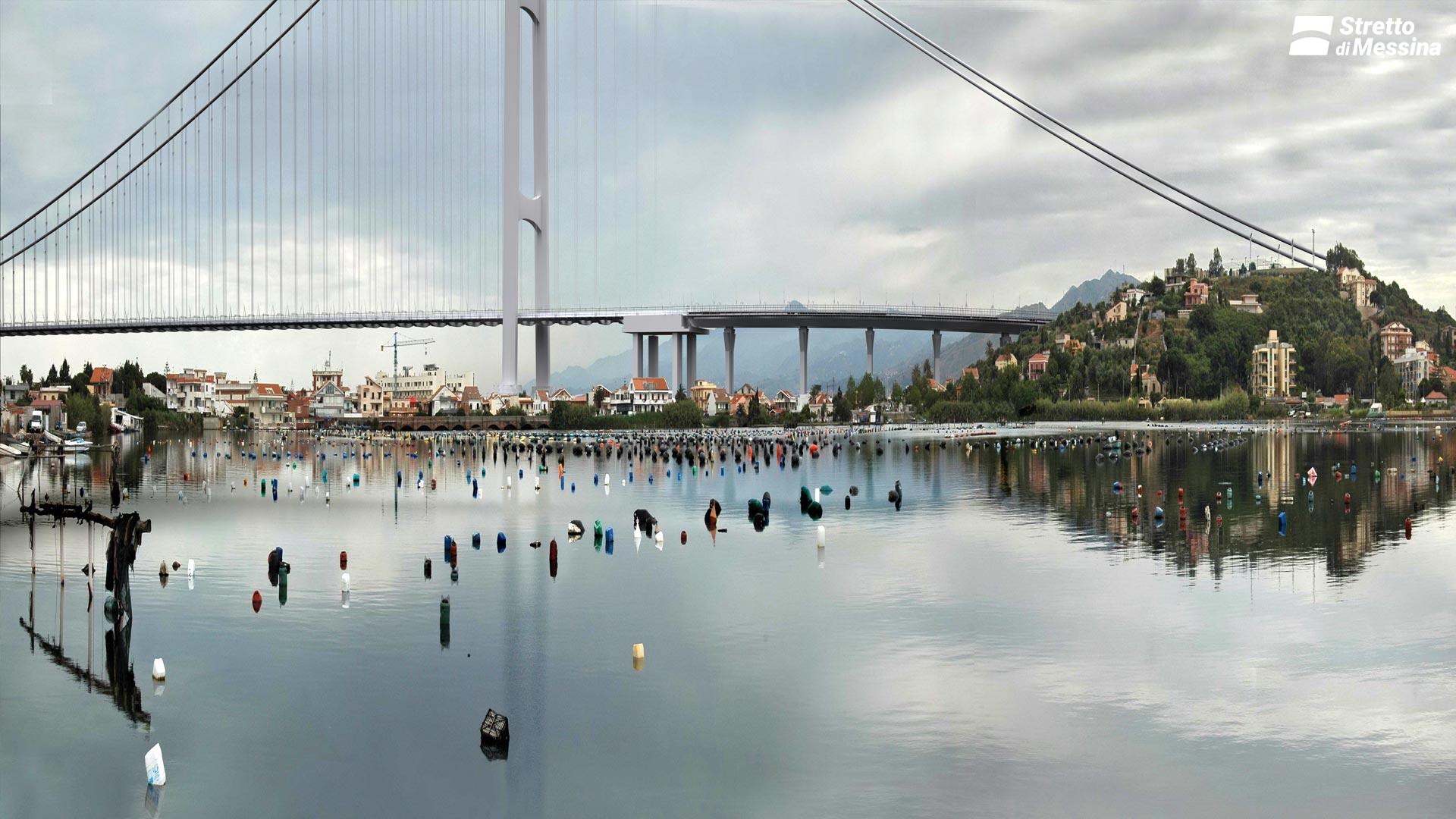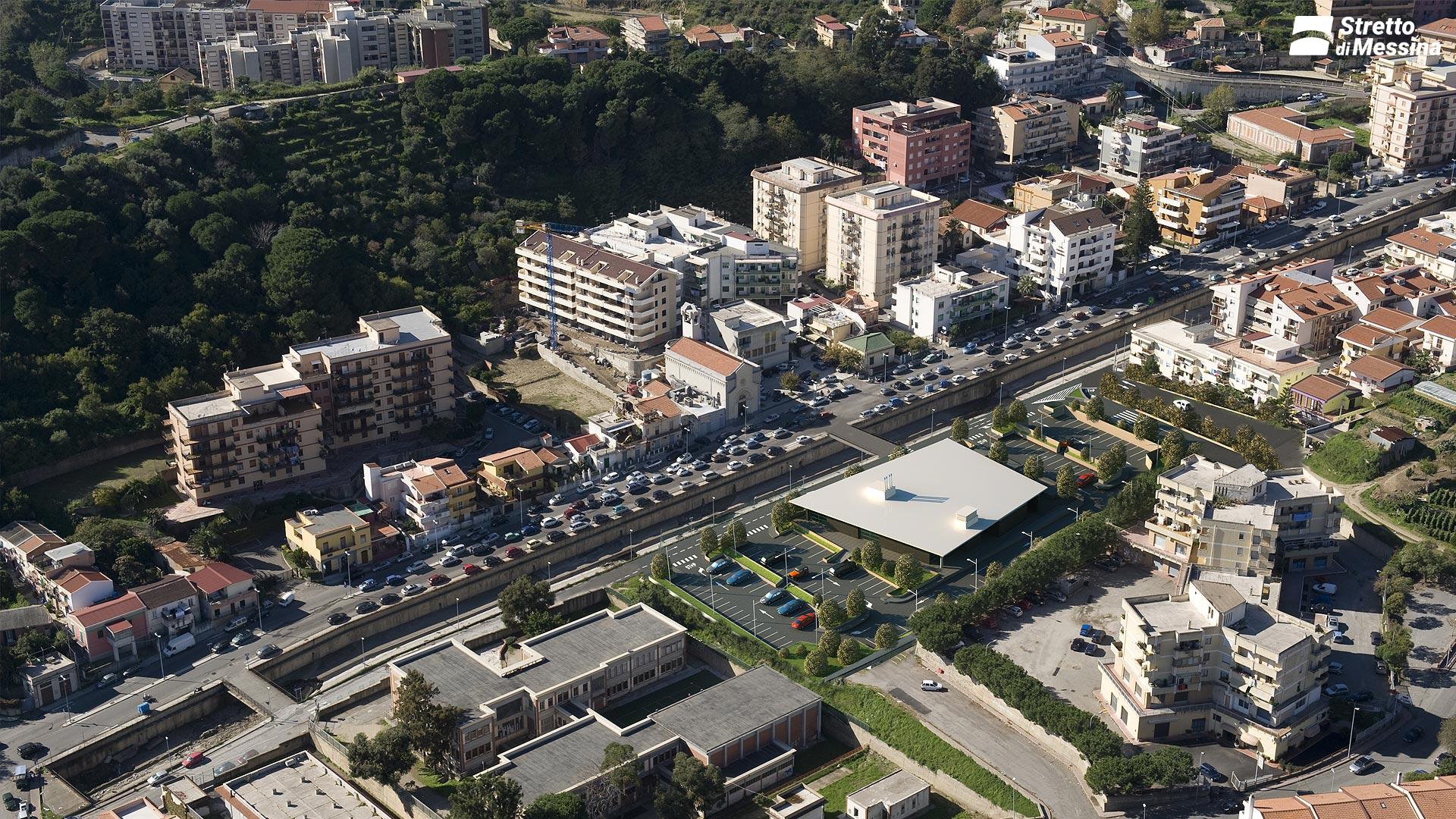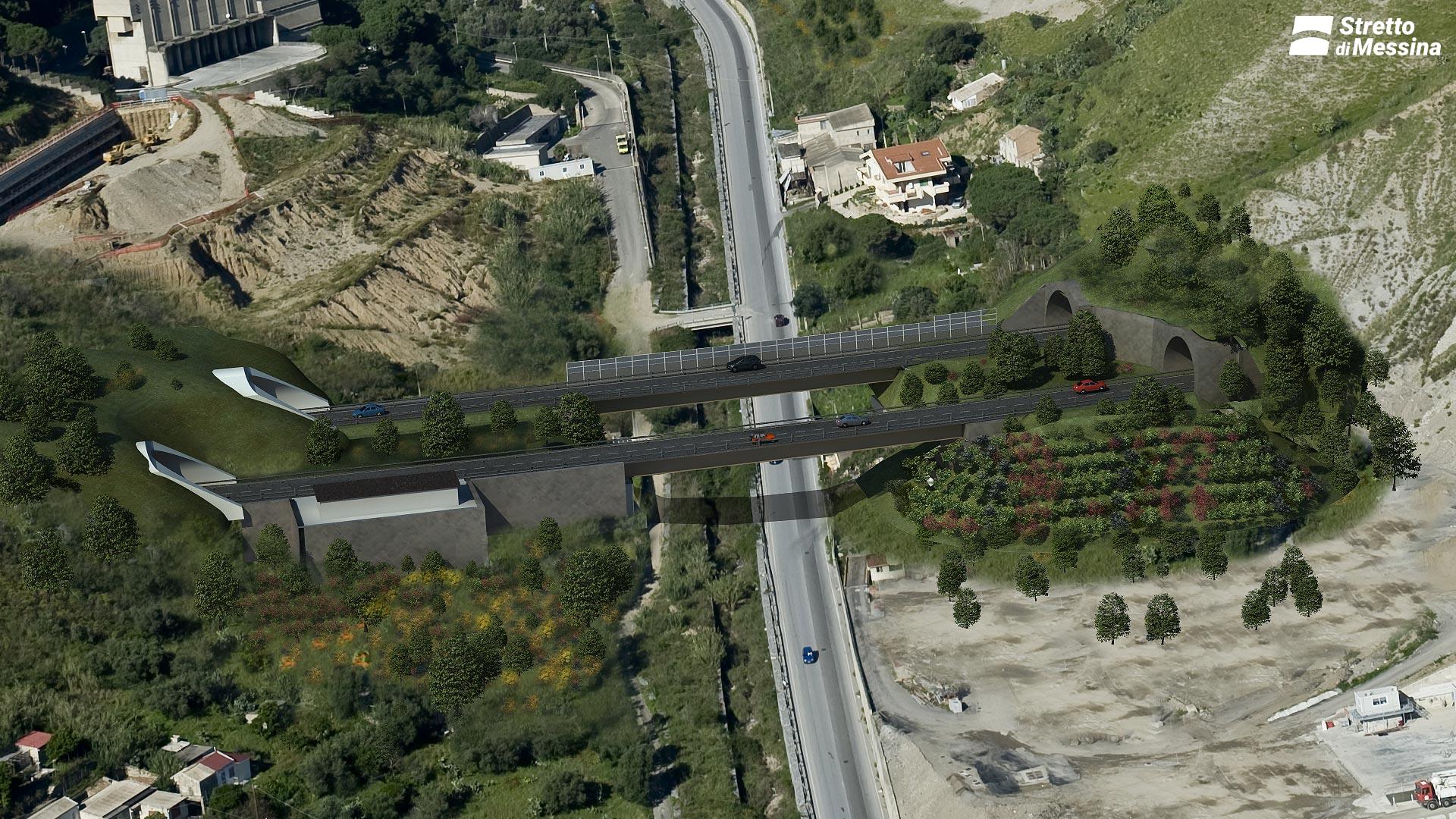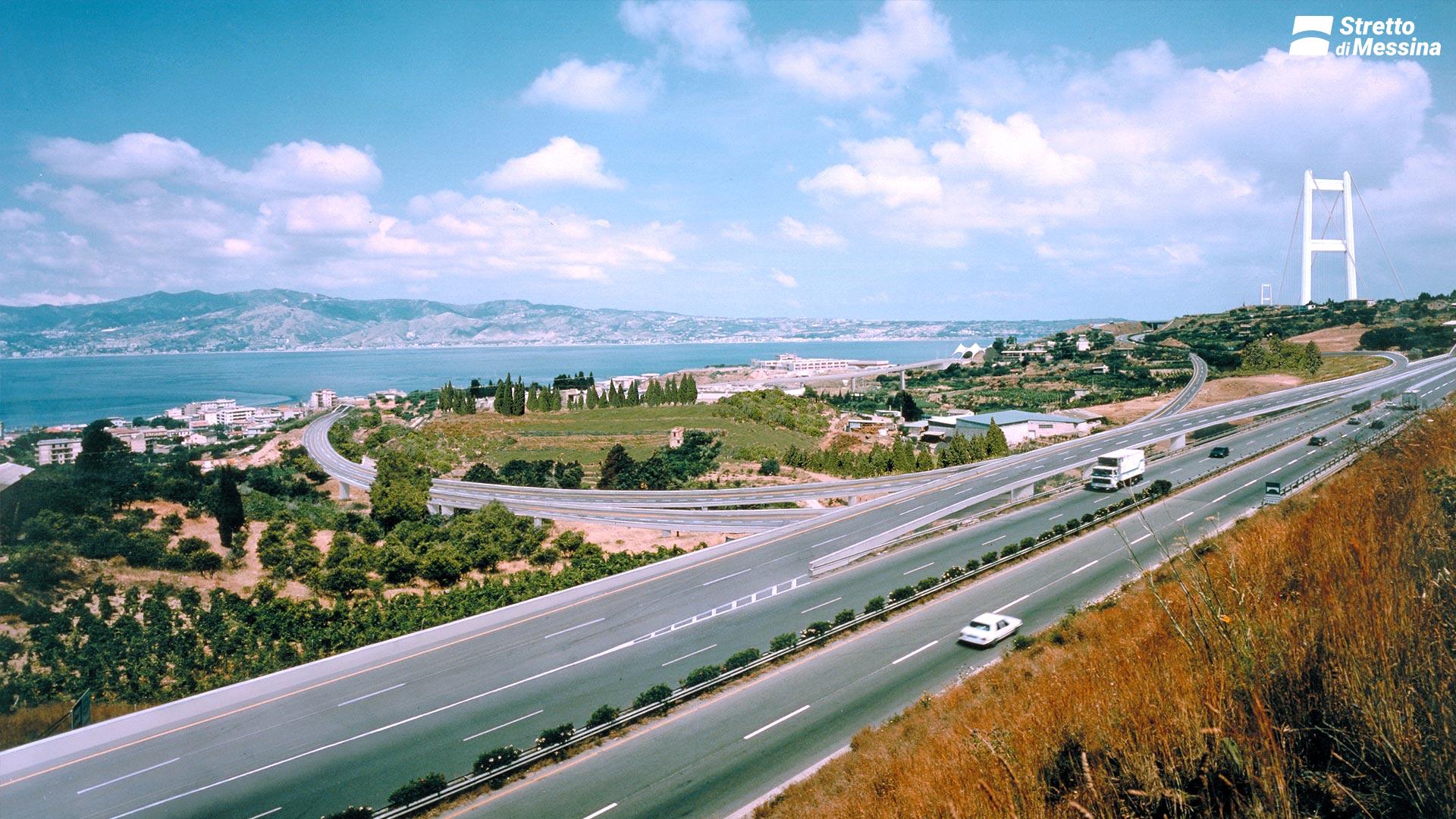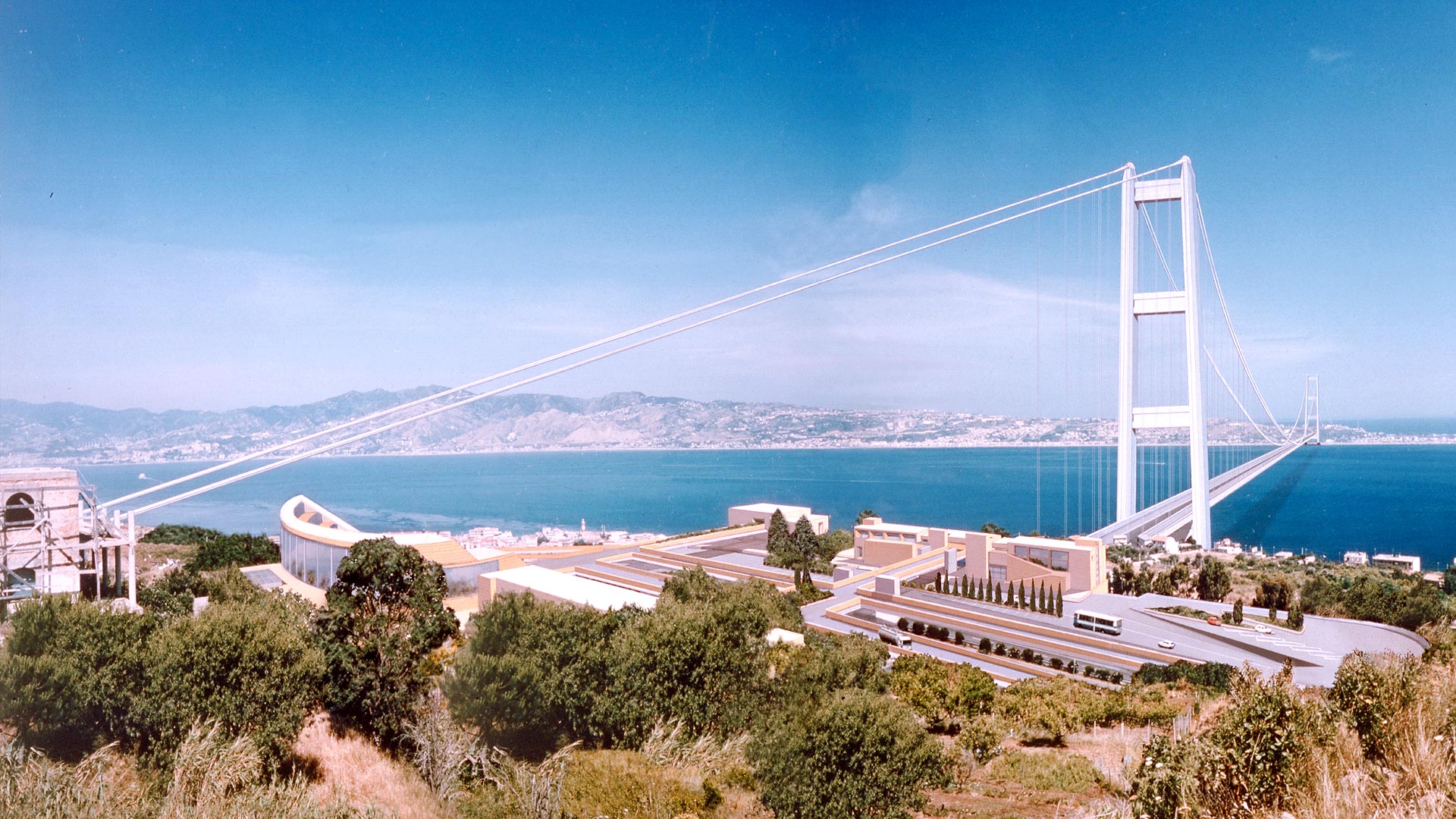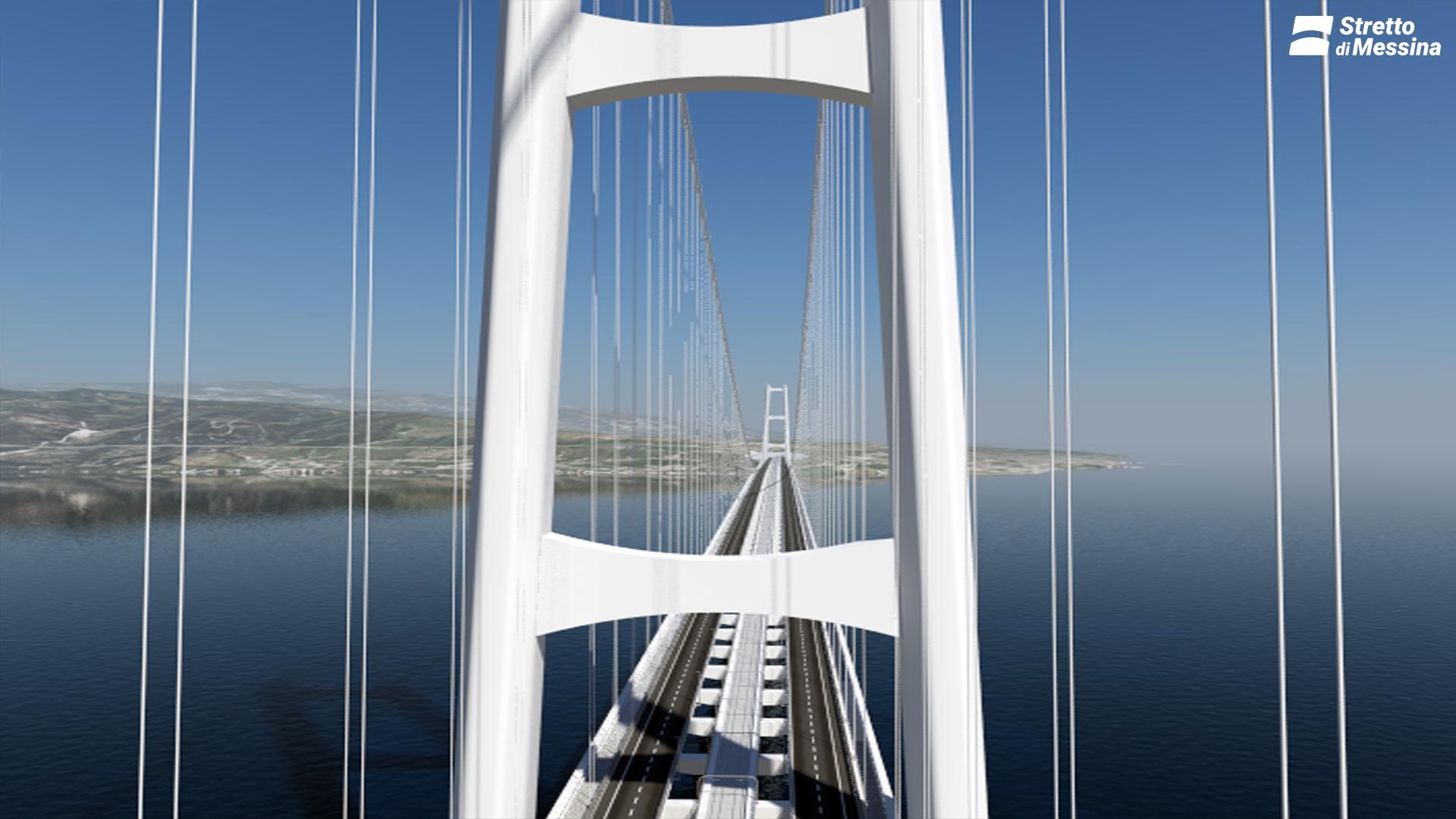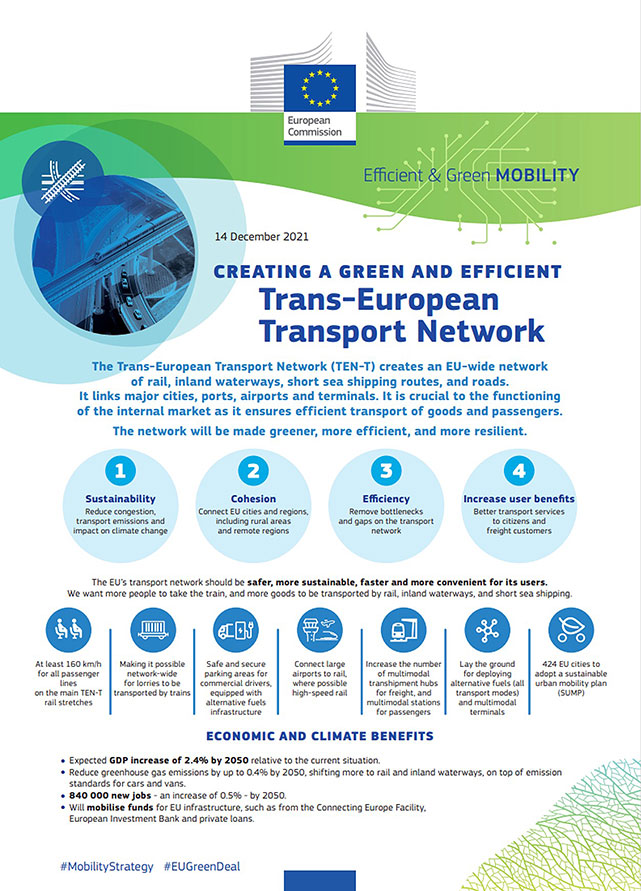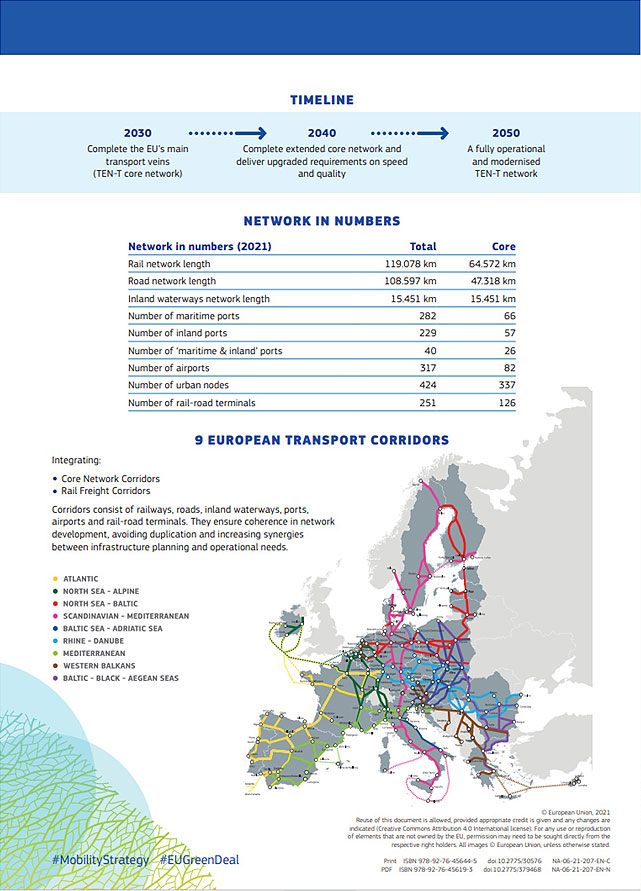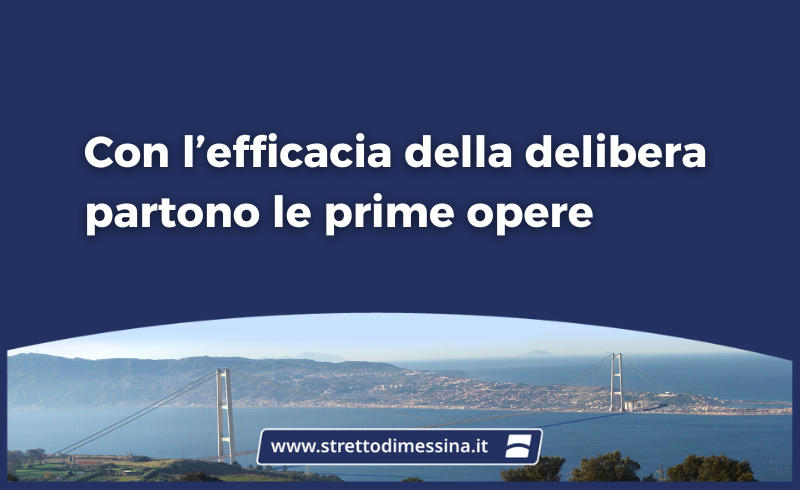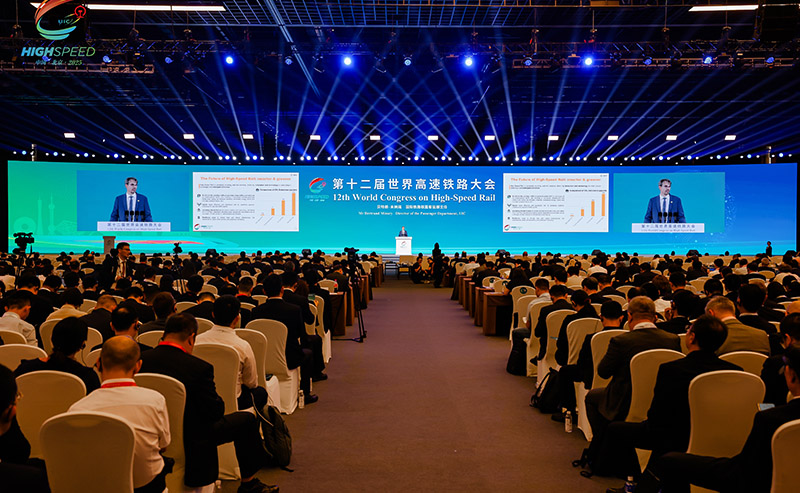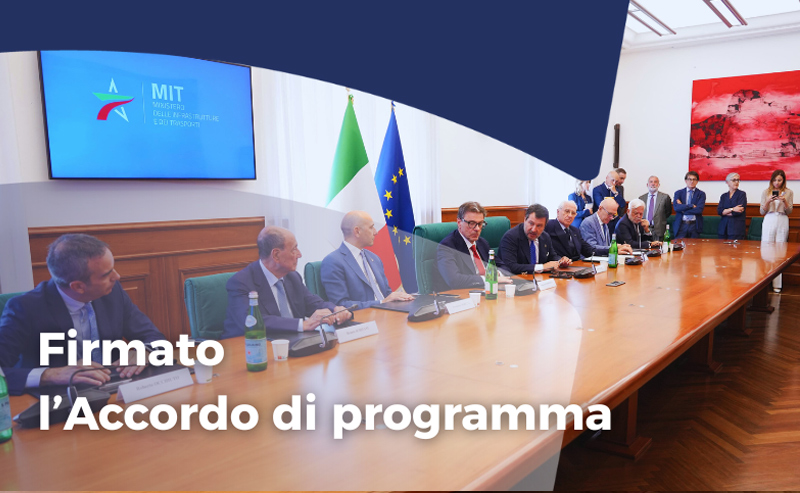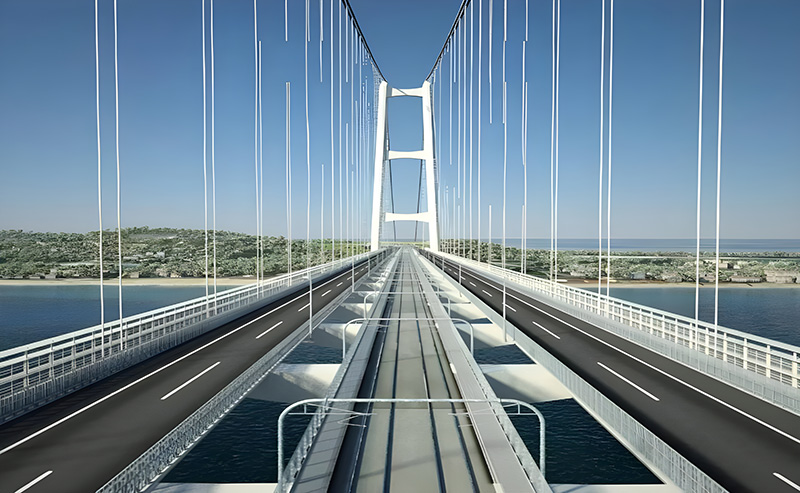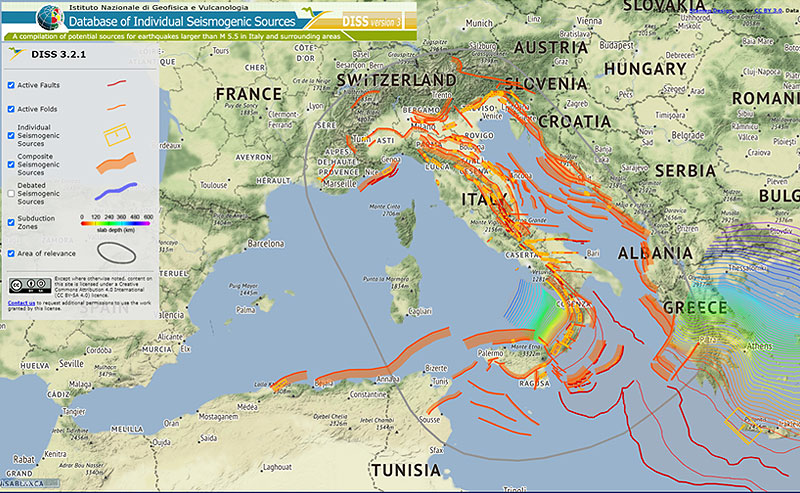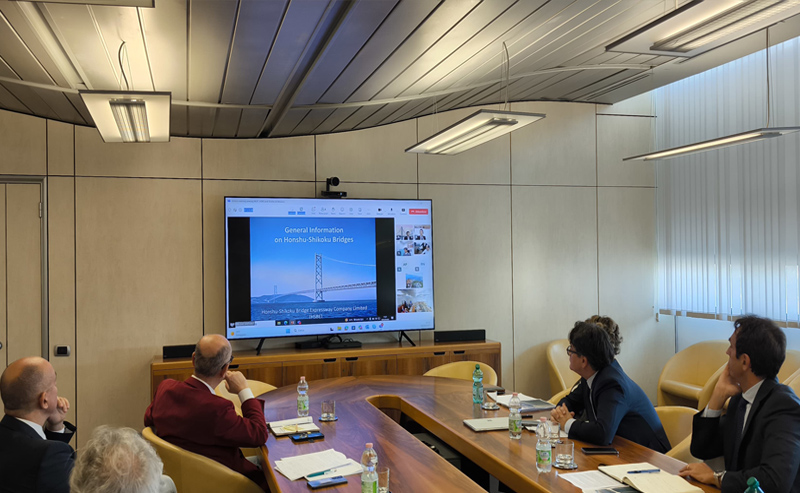STRAIT
OF MESSINA BRIDGE
STRATEGIC, HIGH-TECHNOLOGY INFRASTRUCTURE
SERVING CALABRIA, SICILY AND ITALY AS A WHOLE
The Strait of Messina Bridge, open to trains and cars 24 hours a day and 365 days a year, is the best response to demand for a more efficient and modern transport system connecting Sicily, Calabria and the rest of the mainland. The bridge will make extension of the Italian and European rail network to Calabria and Sicily sustainable.
The bridge
Its record span of 3,300 metres will accommodate 3 road lanes in each direction, 2 service lanes and 2 rail tracks, providing a crossing capable of guaranteeing high levels of safety and service continuity.
Road and rail links
40 km of road and rail links (80% of which running through tunnels) will connect the Bridge, on the Calabrian side, with the Autostrada del Mediterraneo and Villa San Giovanni train station and, on the Sicilian side, with the Messina-Catania and Messina-Palermo motorways and the new Messina train station.
ROAD AND RAIL INFRASTRUCTURE LINKING THE BRIDGE TO THE SURROUNDING AREAS
20.3 KM OF ROAD LINKS
- 56% in tunnels
- Category A road: 2 lanes + an emergency lane in each direction
- Free Flow tolling system
20.2 KM OF RAIL LINKS
- 92% of the rail links with be in tunnels
- Railway standards meeting EU Technical Specifications for Interoperability
- 3 underground train stations
- Completion of the Helsinki-Palermo rail corridor
REDUCED JOURNEY TIMES
1 hour for light vehicles
1.5 hours for heavy goods vehicles
2 hours for trains
STRATEGIC INFRASTRUCTURE FOR THE EUROPEAN UNION
The Bridge forms part of the route for the Scandinavian-Mediterranean Multimodal Corridor, a north-south corridor that the EU considers to be of major importance, with rail freight crossing Europe from Helsinki and Stockholm through to Palermo and Catania, before heading on to Malta.
The main aim of the infrastructure network is to make freight and passenger transport more sustainable, reducing the environmental impact by transferring transport from road to rail, whilst at the same time facilitating trade by removing the bottlenecks that currently cause congestion and delays.
On 21 October 2024, Stretto di Messina and CINEA (the European Commission’s Climate, Infrastructure and Environment Executive Agency) signed a Grant Agreement for the European co-financing for the cost of the detailed design for the Strait of Messina Bridge. This is a non-repayable contribution of approximately €25 million, covering 50% of the detailed design costs relating to the project’s rail infrastructure. The proposal put forward by Stretto di Messina in January 2024 was accepted by the European Commission, which confirmed that the project is of common interest, as it relates to all the four objectives defined in the TEN-T corridor regulation, namely cohesion, efficiency, sustainability and increased user benefits.

"The fate of present and future generations depends, more than ever before, on the quality and quantity of the infrastructure that connects us all."
Ursula von der Leyen
European Commission President
“I am extremely pleased to see the commitment to developing access to the bridge, thanks to the efforts of the Ministry of Infrastructure, which has provided significant funding for road and rail links in Calabria and Sicily.”
Pat Cox
European Coordinator for the Scandinavian-Mediterranean CorridorTHE PROJECT IN PICTURES
